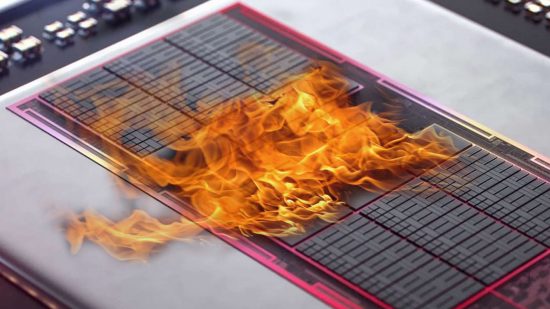It has long been speculated that AMD has decided to cancel the development of a follow-up to the RX 7900 XTX, and instead put all its efforts into mid-range and lower cards. However, we’re feeling a renewed sense of sadness at the scale of what we’ve reportedly missed, if this AMD Radeon RX 8900 XTX leak is to be believed.
While AMD graphics cards continue to struggle to make inroads in the race for PC gamers’ cash, with the latest setback being MSI dropping AMD graphics cards from its roster, it’s understandable why the company has decided not to fight for the top spot on the best graphics card lists of the world. However, based on these specs, its next gen flagship could have been a world beater.
The leak comes via the forums of tech site, Anandtech, with a user posting a listing of the specs of a possible future Navi 4 GPU designated Navi 4C. Navi is the long-running codename for AMD’s GPUs, with the RX 7900 XTX using the Navi 31 moniker.
The key detail in this leak is that it shows this Navi 4C GPU variant having nine shader engines, which tallies with previous rumors. This in turn would infer that the GPU was set to use nine compute chiplets.
What does that mean? Well, for some RDNA 3 GPUs like Navi 31, AMD separated out the GPU package into multiple different dies or chips. These chiplets consisted of a large graphics compute die (GCD), which housed all the processing bits, and six small MCDs, which contain the memory interface and L3 cache chips. For RDNA 4, though, AMD was reportedly looking to break the GPU down further, with multiple chiplets used to form the GCD.
On its own, the fact there would have been nine of these chiplets doesn’t mean a huge amount, because we don’t know how big they would have been nor how many features would be in each one. However, it still speaks to this chip being quite an impressive feat of engineering.
What’s more, further discussion on the forum does give us a clue as to just how large and powerful this chip might have been. Another user suggests the number of compute units for the Navi 4C would have been “above 200” by “a fair bit”. In comparison, the RX 7900 XTX’s Navi 31 GPU has just 96 compute units, so we could have been looking at a GPU with twice the power of that card, with potentially 12,800 stream processors.
Unfortunately, though, we’re not expecting to see such a GPU or card ever appear, as it’s rumored that AMD hasn’t been able to make its new chiplet technology scale to this level. Instead, we’re expecting to see only smaller variants of the RDNA 4 GPU architecture, which are set to compete at lower tiers of performance.
Still, it’s nice to think about what could have been and what may still be, if AMD somehow manages to get Navi 4C working. In the meantime, though, we can recommend giving the RDNA 3 deep dive on Custom PC a read to prime you for what AMD might be cooking up next. Or check out our RX 7900 XTX review for our thoughts on AMD’s current flagship.
